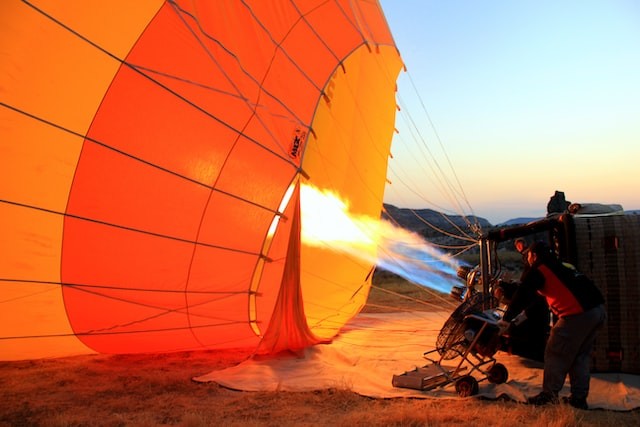Hot air balloons are not able to be steered as much as airplanes or helicopters. However, it is not impossible to steer a hot air balloon in a way that is measurable. To do so, the balloonist must use a combination of altitude and wind to accomplish a smooth landing.
When planning a balloon flight, the pilot should take into consideration the different approaches and their respective advantages. These include the various techniques used to maneuver the balloon and their corresponding visual and audible cues. Some of these techniques include the use of a magnetic compass, a gps unit, and binoculars.

Photo by Aykut Kaya on Unsplash
The most practical example of this would be the launching and landing of the balloon. In order to do so, the pilot must first determine where the wind is blowing at the desired altitude. Once the altitude is determined, the pilot will turn on the burner, which will heat the air inside the balloon to a higher temperature. This will create lift, and in turn, the balloon will rise.
Another important factor is the direction of the wind. If the wind is blowing in the wrong direction, then the balloon will be forced to veer left or right. For instance, if the balloon is flying in the south, and the wind is blowing in the north, then the balloon will be forced to go west. It is best to land as soon as possible in a safe location, because a hot air balloon is vulnerable to turbulence and may end up soaring into the sky.
An altimeter is a great tool to have at hand. Although it is not always used, it can be very useful. Pilots can use the altimeter to track the altitude of their balloon and the wind at their location.

Photo by LOGAN WEAVER | @LGNWVR on Unsplash
Several other tools are also used. One of these is a “crown-man” which is designed to help the envelope of the balloon not sway too much as it lifts. A magnetic compass can also be very useful, but in most cases, a small handheld GPS unit will suffice.
There are many different techniques to choose from, but the one that works best for you will depend on your own personal preferences. If you are new to ballooning, the simplest method is to practice in the best conditions you can find. While this does not mean that your flight will be flawless, you will gain valuable experience that you will find invaluable as you progress.
Lastly, the parachute is a necessary part of a hot air balloon. A parachute is a valve that opens and closes to allow the air inside the balloon to escape. Eventually, this will reduce the temperature of the air inside the balloon and slow down the ascent.
The launching and landing of a balloon is a fun and exciting experience, but it requires a certain amount of planning and skill to get the most out of your ballooning. A good teacher can make or break your ballooning experience.
